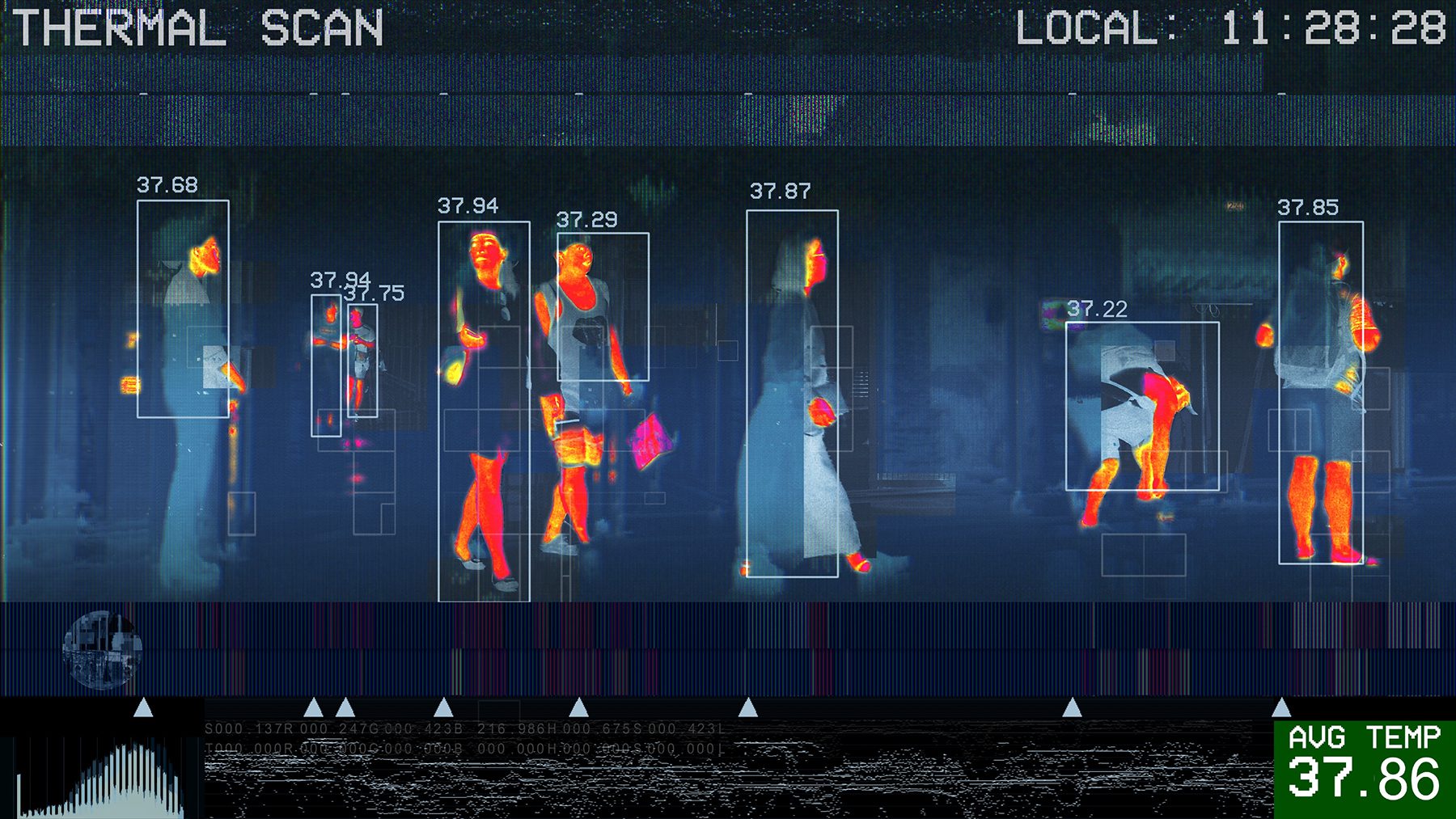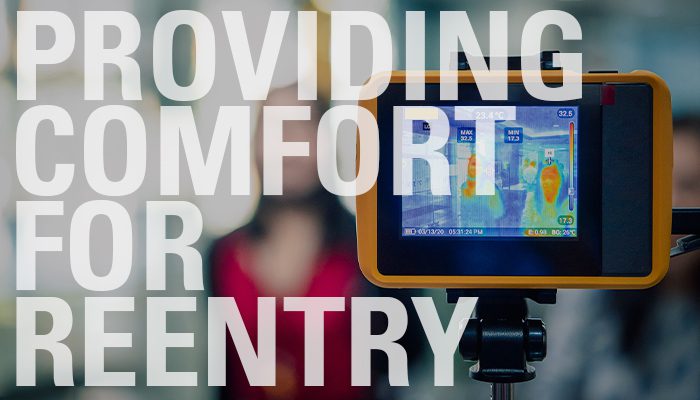The evolution of the modern office needs to accommodate team members meeting in person and online. ESD now Stantec Senior Audio Visual Consultant John Doyle offers an overview of the best technology to consider. (Learn more about the meeting room technology.)
As businesses prepare for the workforce’s return to office, employers continue to look for measures that will help build confidence in the workplace and contribute to the wellness of their staff, visitors and guests.
A technology that continues to see a rise in interest is thermal screening. While the efficacy of thermal screening in detecting people with viral infections can be unreliable due to the high percentage of asymptomatic cases, the use of screening measures can nevertheless provide a level of comfort for some occupants.
Prior to evaluating available sensing technologies and selecting the appropriate solutions for implementation, companies looking to implement thermal screening should first begin by defining their use cases and assessing how they intend to conduct screening procedures. Factors like location, staffing and training for screening positions, acceptable temperature thresholds and measures to address personnel who come up positive should be taken into consideration when defining policies and operational requirements.

Depending on how the organization intends to conduct the screening they may choose to select an operational strategy from one of three categories – self-policing, monitored or automated.
Self-policing deployments allow individuals to conduct the test portion of the screening themselves, and they are expected to follow instructions depending on the result as defined by the particular organization. The system may record results or send alerts, but for the most part it is up to the individual to be responsible enough to follow through. They tend to be relatively inexpensive and easy to deploy, but accuracy and throughput speed may be a problem.
Monitored deployments are implemented at more of a checkpoint location and are either staffed in person or remotely. Personnel can view results remotely or administer screening and direct personnel as needed. These systems are considered a better method of screening because they can be more tightly controlled, and they tend to have faster throughput. However, the cost will tend to be higher due to higher equipment cost as well as staffing cost. In addition, in-person staffed checkpoints tend to require more space where screening needs to be conducted.
Automated deployments streamline the screening process. In addition to recording results and providing automated alerting capabilities, these systems integrate with enterprise applications and building systems to combine the testing process with a form of access control. If the person passes the thermal-screening test, then he or she is allowed to enter the space, but if the person does not pass, then he or she is prevented from entering. A controlled-entry point, whether card or biometric reader, may be integrated with the temperature screening device to further control access to only pre-authorized personnel. These solutions tend to be relatively inexpensive, but accuracy, throughput speed and the risk of tailgating may be a problem.
Amid this pandemic, we are helping clients define their use cases, navigate what’s possible to achieve their objectives, evaluate solutions and select what’s practical for their immediate and long-term needs. If you would like further assistance in better understanding thermal-sensing solutions and evaluating your options, Private Message Mo Fahim or Coleman Wolf on LinkedIn to continue the discussion about technology and how it can set your enterprise and workplace on the road to success.





